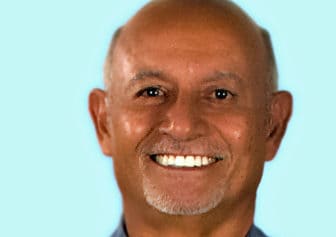COMMENTARY: Why can’t we move the needle on child well-being?
We know generally that successful and supportive families have successful children and that families that are struggling have children who struggle. Yet we continue to focus our efforts on supporting children but not their families, and we continue to get poor results for children.

Courtesy photo
Diego Gallegos
Families in poverty are stressed by the impact of no or low wages: substandard housing, high transportation costs, the simple inability to give their children the basics while being bombarded by images of wealth and prosperity through the media.
Stressed by disconnected and overwhelmed social service and safety nets that seem to work against them rather than for them. And stressed by an educational system that can’t find answers to the educational needs of poor children, especially those of color.
In more severe cases, that stress leads to abuse or emotional abandonment of children. In more cases, family and adult stress leads to stressed-out children who carry that stress into their classrooms and schools, making teaching and learning more difficult.
Some early childhood environments, like Head Start, provide support to both children and their families. Staff engage families at school, in their homes and communities, working with the family to help build parenting skills and to solve life’s challenges, building capacity and skills. At YDI Head Start, 47 percent of the staff are prior Head Start family members.
A National Institute of Health study released in January 2018 found that students who participated in an intensive early childhood program were more likely to attain an academic degree beyond high school. This program supported children through third grade more intensely than most public school programs but closer to what is generally provided in most schools. The biggest difference is that the program also provided parents with training in job and parenting skills, educational classes and social services. It encouraged school involvement and parenting group participation. All this is similar to the Head Start model.
Head Start families transition to an educational system without the mission, resources or capacity to support families. Let’s support teachers by strengthening and better funding those support systems. Families that are stronger provide more support to their children. But let’s do it in a connected, collaborative way.
When government agencies or philanthropic foundations provide resources to families and children, there is usually a competition to determine who gets the resources to provide services. While competition may be healthy, collaboration is a much more effective, successful and cost-effective approach. Incentivize nonprofit organizations to work together, using each one’s strengths to connect services. This approach will require leadership at the governmental, nonprofit, and foundation levels to support this type of collaboration.
Working together more effectively to support families in need may be the action that finally moves the needle on child well-being.
Diego Gallegos, PhD, is president and CEO of YDI, a nationally recognized youth service organization based in Albuquerque that partners with families to help them solve life’s problems. Gallegos came to YDI after 39 years in public education, where he served at the senior leadership level of the New Mexico Public Education Department and the Albuquerque Public Schools. His family came to the South Valley in the 1600s, and he lives there today with his wife Teresa Archuleta, a secondary charter school principal and New Mexico’s National Distinguished Principal K-8 in 2010. Agree with his opinion? Disagree? NMPolitics.net welcomes your views. Learn about submitting your own commentary here.